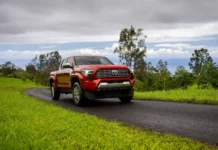Toyota is refining its product development strategy, opting to extend the lifecycle of its core vehicle models.
Instead of maintaining the current 7-year cycle, Toyota plans to extend it to approximately 9 years, compensating with regular software updates to sustain usability and market competitiveness.
According to Nikkei, this marks a significant shift in the Japanese automaker’s approach. Rather than launching new generations with extensive hardware upgrades, Toyota will focus more on software-defined features. This allows vehicles to enhance performance and add functionalities without altering mechanical structures.
Historically, Toyota’s key models were refreshed every 5 years. By the 2000s, as technology and vehicle durability improved, the product lifecycle extended to 7 years. Some models, like the RAV4, still adhere to a 7-year renewal cycle, but this may vary by model in the future.
Toyota currently faces high demand, leading to extended delivery times. Popular models, such as the Land Cruiser SUV, have seen buyers wait years for delivery. Meanwhile, new generations are introduced before customers receive their vehicles. By extending the product lifecycle, Toyota aims to ease supply pressures, increase ownership opportunities, and better retain resale values.
Additionally, the company will reassess wholesale pricing strategies for dealers. Previously, wholesale prices gradually decreased over time after a vehicle’s launch. With the extended lifecycle, pricing will become more flexible, adjusting to market conditions. Toyota assures that the average wholesale price over the 9-year lifecycle will remain consistent.
This change has sparked debate among Toyota’s independent dealer network in Japan, comprising over 230 dealers. Some express concerns that revised wholesale pricing could impact profitability. Toyota emphasizes that the goal is to ensure stable revenue and prevent steep price drops during sales challenges.
Amid this strategic shift, Toyota will continue major design and feature upgrades as needed. However, periodic software updates will become the primary tool for maintaining value, aligning with global trends in electrification and software-defined vehicles.
In Japan and major markets, Toyota will extend the lifecycle of its core models. For region-specific models, such as those in China, the company will maintain market-appropriate development cycles, where competitors often refresh products within one to two years.
Toyota’s transition to longer product lifecycles with enhanced software updates reflects its commitment to stability, quality, and cost efficiency for customers, while adapting to the evolving role of software in modern automotive technology.
TH (Tuoitrethudo)
















































